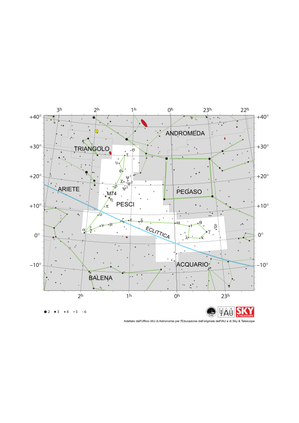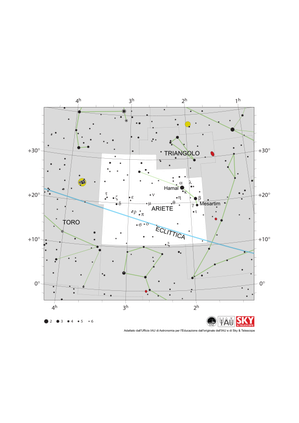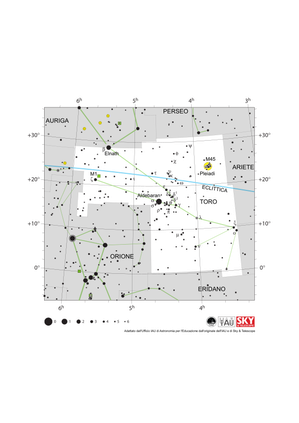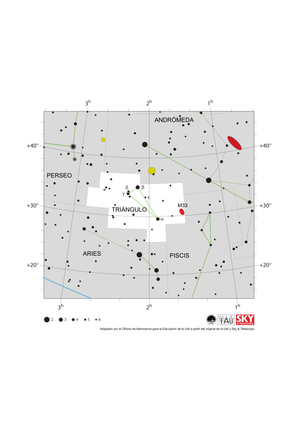Termine del Glossario Ariete
Descrizione L'Ariete è la costellazione più piccola dello Zodiaco. Le stelle che compongono questa costellazione si trovano nella parte di cielo che si interseca con l'eclittica (il piano definito dall'orbita della Terra intorno al Sole). Quindi, dalla Terra, possiamo trovare regolarmente i pianeti, e anche il Sole, nella costellazione dell'Ariete. Nel caso del Sole, ciò si verifica da metà aprile a metà maggio (in quel periodo, ovviamente, non possiamo vedere le stelle della costellazione). L'Ariete è una delle 88 costellazioni moderne definite dall'Unione Astronomica Internazionale, ma risale a molto prima: era già una delle 48 costellazioni alle quali era stato assegnato un nome dall'astronomo Claudio Tolomeo nel II secolo.
Termini correlati
Vedi questo termine in altre lingue
status del termine e della definizione La definizione originale di questo termine in inglese é stata approvata da un ricercatore astronomo e da un docente La traduzione di questo termine e della sua definizione sono state approvate da un ricercatore astronomo e da un docente
Il Glossario Multilingue OAE é un progetto dell'Ufficio IAU per la didatticadell'astronomia (OAE) in collaborazione con l'ufficio IAU OAO per la DivulgazioneAstronomica (OAO). I termini e le definizioni sono stater scelte, scritte eriviste da un impegno collettivo da parte di OAE, i Centri e i Nodi OAE e iCoordinatori Nazionali per la Didattica dell'Astronomia e da altri volontari.Potete trovare una lista completa dei crediti, Tutti i termini del glossarioE le definizioni sono pubblicate su Creative Commons CC BY-4.0 licenza e dovrebbero essere accreditate ad IAU OAE.
Se noti un errore di fatto o di traduzione in questo termine del glossario, per favore contattaci.
File multimediali correlati
Osservatori cileni in sede, di Robert Barsa,
Crediti: Robert Barsa/IAU OAE
License: CC-BY-4.0 Creative Commons Attribuzione 4.0 Internazionale (CC BY 4.0) icone
Diagrami correlati
Mappa della Costellazione dei Pesci
Crediti: Adattato dall'Ufficio IAU di Astronomia per l'Educazione dall'originale di IAU/Sky & Telescope
License: CC-BY-4.0 Creative Commons Attribuzione 4.0 Internazionale (CC BY 4.0) icone
Mappa della costellazione dell'Ariete
Crediti: Adattato dall'Ufficio IAU di Astronomia per l'educazione dall'originale di IAU/Sky & Telescope
License: CC-BY-4.0 Creative Commons Attribuzione 4.0 Internazionale (CC BY 4.0) icone
Mappa della Costellazione del Toro
Crediti: Adattato dall'Ufficio IAU di Astronomia per l'educazione dall'originale di IAU/Sky & Telescope
License: CC-BY-4.0 Creative Commons Attribuzione 4.0 Internazionale (CC BY 4.0) icone
Mappa della Costellazione del Triangolo
Crediti: Adattato dall'Ufficio di Astronomia per l'Educazione della IAU dall'originale della IAU e di Sky & Telescope.
License: CC-BY-4.0 Creative Commons Attribuzione 4.0 Internazionale (CC BY 4.0) icone













